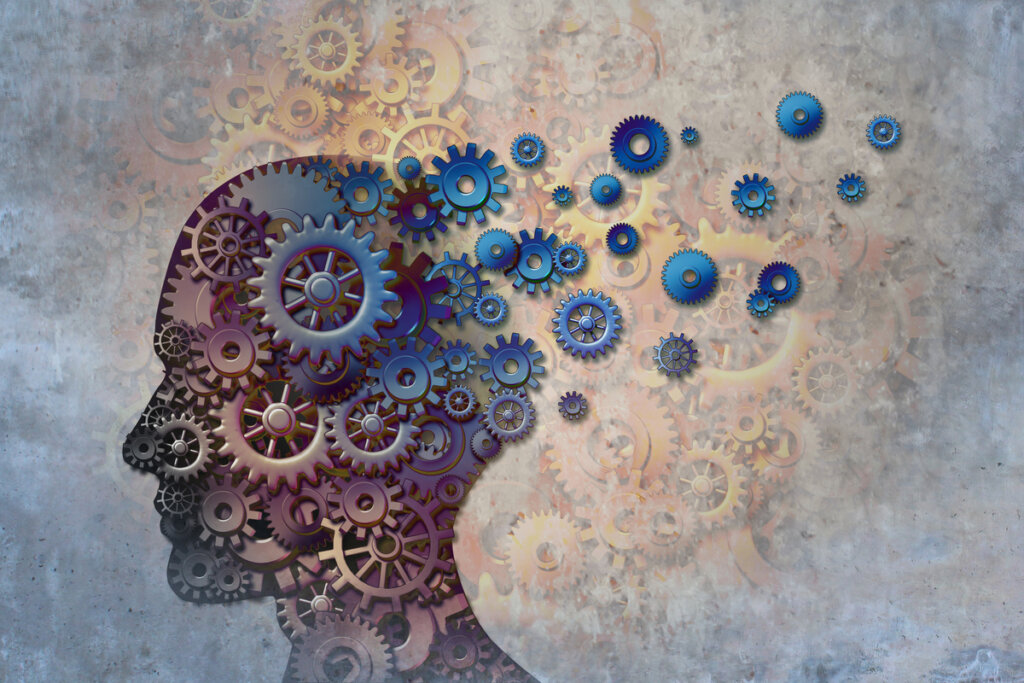Six Benefits of Slow Thinking

The human mind tends to take shortcuts to decide quickly, save energy, and increase the chances of survival. For instance, imagine not being able to quickly dodge a blunt object coming toward you. Indeed, our reflexes, as fast action mechanisms, are necessary for survival.
In today’s fast-paced lifestyle, we often feel increasingly pressured to make instant, fast, and efficient decisions that allow us to meet the demands that are made of us. The primacy of this way of acting tends to relegate slow thinking to the background.
Thinking quickly and thinking slowly are two ways of making decisions that you can take advantage of depending on your situation. One is no more important than another and both are necessary. However, at present, speed seems to have more weight and slowness less. So, what systems are these two ways of processing information based on and what are the benefits of slow thinking?

System 1 and system 2
Quick thinking is based on what’s known as system 1. This allows quick, automatic decisions to be made with little or no effort or voluntary control (Kahneman, 2012). The system is economical, since it requires little energy, but it’s not perfect. In fact, this processing route is prone to biases and systemic errors that end up affecting the decisions you make.
System 1 is efficient and allows you to respond quickly with little available information. This system:
- Directs you toward the source of a sudden sound.
- Makes you look disgusted when you see something unpleasant.
- Allows you to drive or do activities on autopilot.
- Allows you to understand simple sentences.
- Helps you recognize objects quickly.
On the other hand, slow thinking is determined by system 2, which promotes slow, effortful, and controlled decision-making. It focuses your attention on mental activities that require it, such as complex calculations, and is associated with the experience of acting, choosing, and concentrating (Kanheman, 2012).
This processing system can’t operate without focused and voluntary attention. It requires more effort and investment of energy, so it becomes exhausting for you to use it constantly for long periods of time. Some examples are:
- Watching and waiting for the traffic lights to change.
- Finding a book in the library.
- Comparing two products to find out which is best.
- Checking the validity of an argument.
- Observing behavior in a social situation.
- Listening to a person’s voice amidst surrounding noise.
In order for you to carry out each of the aforementioned activities correctly, you have to control your attention and focus it on the objective stimulus. It requires a conscious and voluntary intervention on your part.
The benefits of slow thinking
Below, we’ll review some of the most important benefits of slow thinking.
1. Allows you to reflect and consider alternatives and consequences
Thinking slowly and processing information in a slow and detailed way helps you to better reflect on the circumstances you’re in, any associated problems, and the solutions you can use to solve them. In fact, slow thinking makes it possible for you to better link options with their respective consequences.
With slow and critical thinking, you can compare, predict, and visualize the primary or secondary effects of your decisions. Indeed, these actions can only be reached by traveling along the path of slowness.
Critical thinking is directly associated with a slowed-down way of thinking that involves careful analysis of ideas.
2. Manages logic, mathematics, and statistics
Although the fast-thinking system 1 can perform basic mathematical calculations, such as 2+2=4, it experiences serious difficulties in carrying out more complex calculations that require deeper reasoning. Therefore, if you had to analyze and solve a mathematical problem using different formulas, quick thinking would fall far short. You’d be far more likely to succeed with slow thinking.
Likewise, solving statistical problems efficiently and effectively requires slow thinking. System 1, the quick thinker, isn’t a good statistician. It can offer automatic and fast solutions, but can’t guarantee that the answer will be correct.
3. Corrects mistakes
To correct errors, you need a sustained attentional process that helps you find where the problem is. Then, along with other higher mental processes, you can adjust your mistakes. Consequently, for this, you need to use slow thinking. It helps you make a detailed, thorough, and analytical analysis of the error.
To solve errors you need to carry out metacognitive work, which can only be achieved by slow thinking. Metacognition as a strategy allows you to plan, monitor, control, and evaluate the results you obtain during the performance of a task.
Likewise, it allows you to think about the cognitive process you’re using, the task that you’re performing, and the strategies that you’re using during the whole process.
4. Helps in making deliberate choices
Slow thinking allows you to make conscious decisions. Automatic and fast processes weaken deliberate choices, as you have no time to stop and intentionally analyze your alternatives before choosing one.
When you slowly make a decision, it tends to be more reasonable, since you’ve contemplated the relevance and consequences of the different options available to you. Consequently, you choose the one that best suits the situation. In fact, every conscious, controlled, voluntary, and deliberate choice requires you to think slowly.

5. Makes it easy to follow rules
Slow thinking, being sequential, makes it easier for you to follow rules. When thinking quickly, you omit the step-by-step rules, since you seek efficiency but not effectiveness. Thus, you jump from one stage to another in order to achieve immediate results.
However, when you think slowly, intentionally, deliberately, and voluntarily, you find it easier to follow the rules. That’s because you’re able to understand them by reflecting and looking for their meaning. In addition, slow thinking allows you to recognize how they need to be applied and what’s expected when they’re implemented.
6. Controls thoughts and behavior
To regulate your thoughts and actions, you must think slowly. Slow thinking makes it easier for you to think about what you’re doing and what cognitive processes you’re using. By looking, analyzing, and reflecting on your own thoughts and behaviors, you can initiate action plans that help you to better manage these processes.
All cognitive control requires voluntary, deliberate, and conscious intervention. It allows you to adjust, regulate, and evaluate any changes and implications they may have, both for your mental functioning and for the development of your relationships.
Finally, thinking fast and thinking slowly are equally useful and beneficial processes. It’s best not to think of one as better or worse than the other. Instead, concentrate on getting to know when to choose one or the other, depending on your circumstances.
All cited sources were thoroughly reviewed by our team to ensure their quality, reliability, currency, and validity. The bibliography of this article was considered reliable and of academic or scientific accuracy.
- Kahneman, D. (2012). Pensar rápido, pensar despacio.Debate.
- Krauzlis, R. J., Wang, L., Yu, G., & Katz, L. N. (2021). What is attention?. Wiley Interdisciplinary Reviews: Cognitive Science, e1570.
- Michel, J. B. (2020, January). Thinking fast and slow in medicine. In Baylor University Medical Center Proceedings (Vol. 33, No. 1, pp. 123-125). Taylor & Francis.
- Sherwood, C. C., Subiaul, F., & Zawidzki, T. W. (2008). A natural history of the human mind: tracing evolutionary changes in brain and cognition. Journal of anatomy, 212(4), 426-454.
This text is provided for informational purposes only and does not replace consultation with a professional. If in doubt, consult your specialist.








